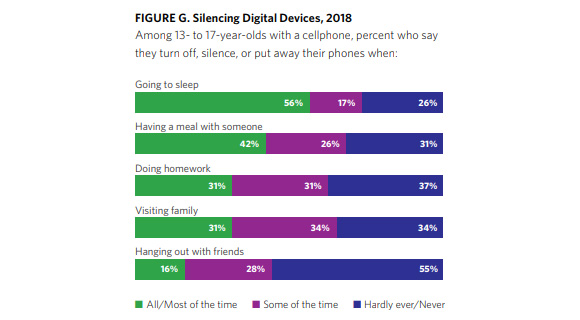
Common Sense Media, a nonprofit organization that studies youth and media, recently released the 2018 “Social Media, Social Life” report on teens and social media. The report summarizes the results of “a nationally representative survey of 1,141 13 to 17 year olds in the United States.”
Since the survey was last administered in 2012, there were several key shifts. In 2018, 70% of respondents reported using social media multiple times a day, as opposed to only 34% in 2012. More teens also have a smartphone; 89% have one today, compared to only 41% in 2012.
The study also found that social media is particularly important to teens who report a lower sense of well-being (happiness, self-esteem, etc.). Almost half of teens (46%) with low well-being report that social media is “extremely” or “very” important in their lives. Teens with low well-being are also more likely to experience cyber bullying: 35% of this group report being cyberbullied while only 5% of teens with high well-being report cyberbullying.
While the majority of teens in the US are using social media, 72% of respondents “believe that tech companies manipulate users to spend more time on their devices.” The majority of respondents (68%) also believe that “Social media has a negative impact on many people my age.”
Teens report that disconnecting from their devices is challenging. They were the least likely to turn off or put away their phone most or all of the time when with friends (16%), and most likely to disconnect when going to sleep (56%). Interestingly, a third of teens (33%) also report that they “wish their parents would spend less time on their devices.” This statistic is also on the rise from 21% in 2012.
Young people use technology at home, at school, and in public libraries. Because technology is an omnipresent part of young people’s lives, they need to learn the skills to navigate technology successfully. School and public libraries, in partnership with families, are both important places for teens to learn about using technology wisely and being good digital citizens.
The full report can be found here.
Note: This post is part of our series, “The LRS Number.” In this series, we highlight statistics that help tell the story of the 21st-century library.